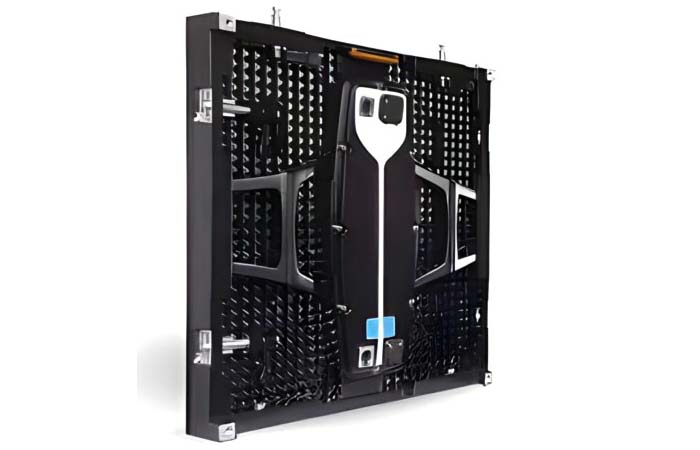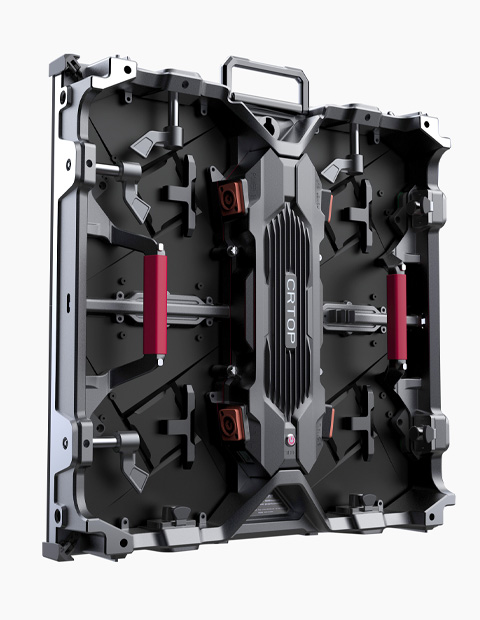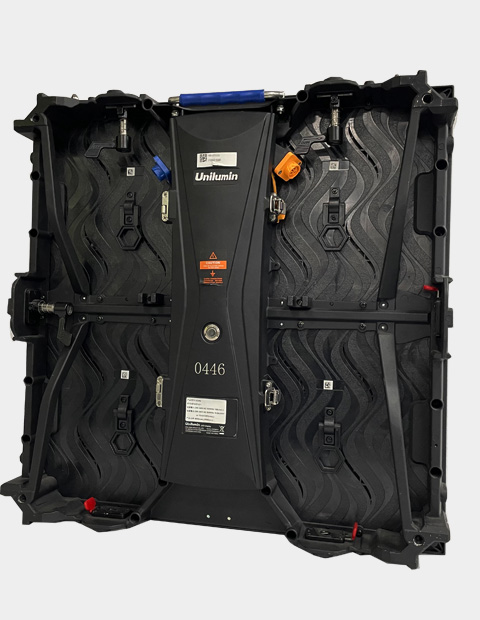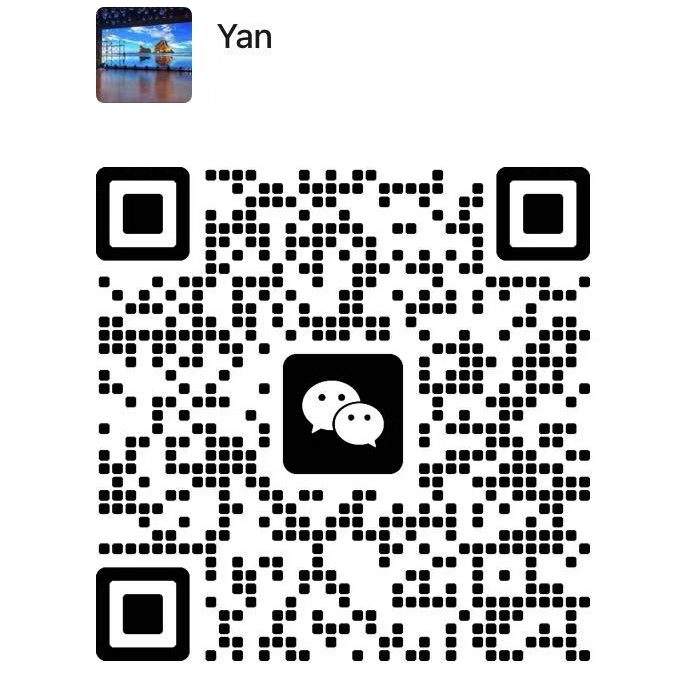The Radio and Television Station with 400m2 area is a medium-sized, 4-channel HD studio. The studio is used to record a variety of programs, including news, interviews and variety shows. It can also be used for artistic evening parties, press conferences, or even recording news. The studio installed a small-pitch full-color LED display system at the end of 2018. In order to give TV technology colleagues some references when selecting and designing studio LED displays, GDHANHENG will summarize briefly the design ideas and experience.
Introduction to the Studio LED display System
The LED screen display system for Radio and Television Station is mainly made up of these parts:
- LED display screens
- sending/receiving cards
- video processors
- control computers
- power distribution system.
The large LED screen is made up of three groups.
LED display Parts:
| Feature | Main Screen | Secondary Screen (each) |
|---|---|---|
| Dimensions | 7.68m x 3.2m | 3.2m x 3.2m |
| Screen Type | LED | LED |
| LED Module Type | P2.5 Full-Color | P2.5 Full-Color |
| Cabinet Material | Die-Cast Aluminum | Die-Cast Aluminum |
| Resolution | 3072 x 1280 | 1280 x 1280 |
| Mobility Feature | No | Universal Wheels with Locks |
| Number of Wheels | No | 3 pairs per screen |
Video Processor and Splicer Parts:
Video Processor:
| Feature | Description |
|---|---|
| Model | BVP6000 Custom Video Processor |
| Operation Mode | Operates with two backup units |
| Video Inputs | Equipped with a wide range of inputs for various signals |
| Windowing Capability | Supports 6-way windowing |
Splicer parts:
| Feature | Description |
|---|---|
| Stored Parameters | Window opening position, signal source, and size |
| Snapshot Storage | Can store up to 32 snapshots |
| Independent Operation | Capable of operating without the control computer |
Others:
| Component | Feature | Details |
|---|---|---|
| Sending Card | Double Physical Backup | Can switch between active and standby in one minute |
| Data Transmission Backup | Dual-channel network cables | |
| Secondary Screen Cable | Interface Design | Designed as an interface box |
| Susceptibility to Failure | Frequently moved, high failure risk | |
| Receiving Card | Network Cable Wiring | Uses dual network cable for main and backup |
Studio LED Video Wall Design ideas and process
Studio requirements and use environments are unique. The large LED screen must follow the principles:
- safety and reliability
- strong scaling
- ability meeting the needs of various types of production
Here are some studio LED screen design ideas :
Clarify the use of large LED screens
- Does the large LED screen show news or entertainment?
- Is there a single large LED screen or a group of smaller LED screens?
- Can the LED screens be used individually or in combination?
- How many windows are required?
- What video signals sources may be connected to the system in the future?
- What type of interface do you need?
- What is the number of each type? etc.
The 400m2 large studio LED screen will have one main screen and two auxiliary screens. The main screen is fixed, while the auxiliary screen moves via a universal wheel. The three LED screens, when used individually, can be set up with different lighting to create three separate scenic spots.
When recording small LED scenes (such as news broadcasts), the secondary screens can be used to backup each other. They can be used together to create a super-large LED screen or arranged on either side of the main screen for more dramatic stage effect.
In order to accommodate large LED screens, the interfaces used are HD-SDI with 6 channels, HDMI with 4 channels, and DP with 3 channels. Old interface types like VGA have been abandoned. HD-SDI is also compatible with the video matrix input interface, making the large-screen images more diverse.
Determine the LED Display size and location of LED screen.
The final LED display size will be determined by the size of your studio and camera position. The 400m2 studio has a stage light above 7m the ground and the stage is 17m wide, and 30cm high. The camera position is 10m away from the main screen.
When the base of large LED screen is placed 20cm above the stage height, the effect is best at 3 to 4m. This not only reflects the impact of a large LED display but also allows for the expression of stage and lighting design. The size of the final large LED screen is determined by the size of LED cabinet The main screen measures 7.68m long and 3.2m tall, while the secondary screens measure 3.2m long and 3.2m high.
Related:
How to calculate LED display Size? What is the ideal viewing distance?
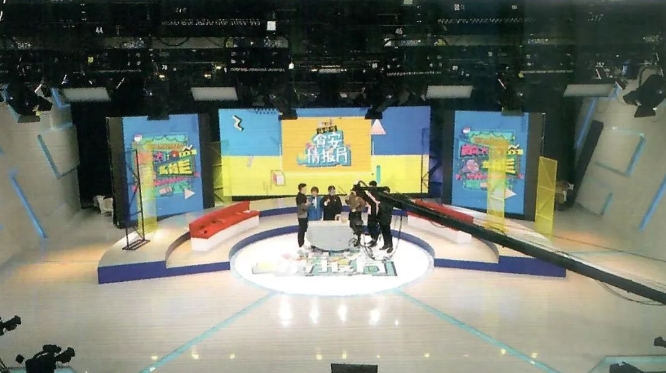
Choose the LED screen Pixel Pitch
- The pixel pitch is the most important parameter for the large LED screen.
- The value of this parameter is called P.
- Clearly, the smaller the pixel pitch, the more pixels there are on the LED panel at similar size.
- This results in higher resolution and smoother picture.
- The price of the large LED screen is higher.
The P2.5 LED screen was good after considering all factors, including the large LED screen size, price and studio lighting environment.
P2.5 LED screens also have a high market share. The technology is mature and they are more reliable. It is also an important factor to consider when selecting LED screen model.
Determine the refresh rate.
- The effect of LED screens is also affected by the refresh rate, which is an important parameter.
- The most common method of driving small-pitch LED screens is dynamic scanning, also known as 32-scan LED screen.
- The higher the refresh rate is, the more frames that can be displayed in a second.
- Also, the less flickering the screen will have and the better the smoothness.
If you want a large LED screen frame rate to reach 60Hz then the LED display refresh rate needs to be 60×32=1920Hz. It will be better if the LED screen can reach 3840Hz. The 400m Studio LED screen is a high-rate LED panel that comes with high-performance driver IC. When paired with Xi’an Nova’s sending/receiving cards, it can reach a rate of 5000Hz.
Related:
What are The Gray Scale Levels, Refresh Rates, and Driver Chips of LED Screens?
The color temperature and brightness should be easily adjustable.
Color temperature changes greatly with light, so it is important to adjust the color temperature during design in order to maintain the color of your screen. The brightness of LED screen can be adjusted at any time to suit the program to avoid “dead light” where the background is too bright, and the foreground too dark. The adjustment of these parameters is frequent and the operation should be simple, convenient, and easy to use.
Silent and noise-reduction design.
The area of LED large screens is huge, and their power per square meter ranges from 500 to 800W. The total thermal power of the large LED screen is high. Therefore, it’s important to have a good heat dissipation system. Otherwise, It is very easy to damage the LED beads, cause module deformation and reduce the lifespan of the LED screen. Unlike outdoor screens, conventional fans that produce a lot of noise cannot be used to dissipate heat.
Safety Design
To improve the disaster recovery and security capabilities of the system, various measures have been taken during the design.
- Choose a reliable design: The large LED screen will freeze after the signal has been interrupted to prevent black-screen accidents. The power supply box uses a computer-controlled intelligent remote control method. The shunt closes after the switch is turned on to avoid a large starting current. It can be operated independently of the computer. The cabinet’s power supply is dual-supply parallel mode. This means that any power failure won’t affect the cabinet.
- Create a backup system: Video processor, sending cards, data transmission network cables, system control computers, and even the power supply box are all designed to have a 1:1 back-up to ensure that in case of failure, it can be switched over to a backup within three minutes.
- Adopt a quick repair design: LED Screen modules, receiving cards and data cables are all fast repair designs. For parts that can’t be backed up easily, a disassembly design is used for rapid repair. Repair and replacement times of fault-prone components should be within 15 minutes.
Studio LED display uses Experiences and Tips
We have gained a lot of experience using LED screens over the years.
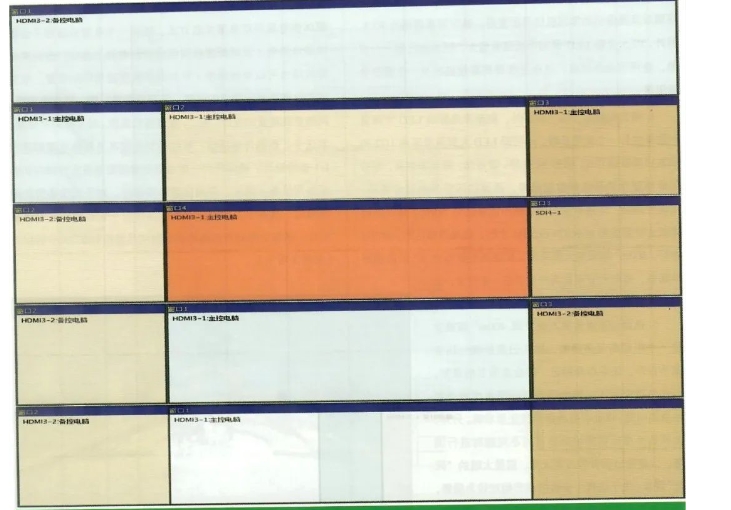
There are several common solutions for opening windows.
- Some of the most common window-opening solutions include:
- Three screens that display one screen together;
- Three screens that display three different screens individually;
- Three screen combinations;
- Three screens each displaying a different screen;
- One main and one secondary screen, which respectively displays;
- One main and two main screens.
- Combining block and sub-screen will display another screen.
Studio LED display Brightness recommendations
Lighting and the type of program will determine the brightness level for the large LED screen. In theory, the full-color P2.5 LED screen can be illuminated to 1000CD/m2, however in reality it is only needed at half brightness. In general, the background screen brightness can be set at 40%.
Variety shows usually have a weaker background light to emphasize the effects of computer lights and dyeing lamps.
- Set the brightness of the large background screen to 30% at this point.
- To dim the screen, you must first identify the surface and backlight of your host.
- Adjust the brightness of the background screen after you have set the camera, the aperture and the lights.
Reducing Moire pattern solution
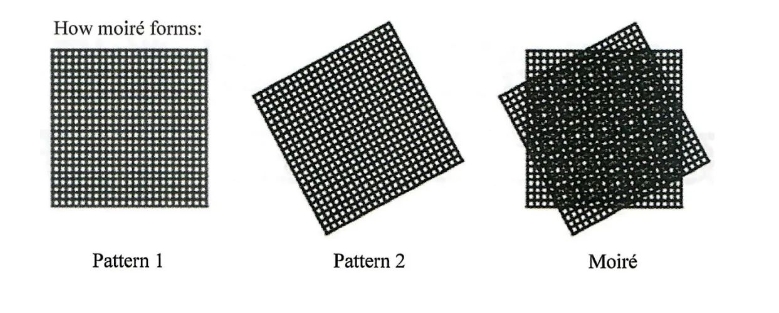
According to the “Technical requirements and measurement methods of LED screens for studio use” published by the China Film and Television Technology Society, three solutions can be used to fix the moire issue:
- using special cameras,
- adding screen films
- changing shooting parameters.
The moire issue of LED screens is directly related to the screen brightness, pixel pitch, distance between camera and large LED screen and camera focus point.
Simple: the smaller the pixel pitch,the lower the brightness and the farther you are, the less moire pattern is. It can effectively eliminate moire when the vertical distance between the camera focus point and LED screen is greater than 2.5m, and the distance between the camera and the person being photographed is more than 3m.
Select universal wheels or tracks to move the secondary screen.
To move the secondary screen, you can place it on the track. It has the advantages of safety , reliability and precise movement position. However, the track is fixed to a solid surface and has a limited movement range. This requires that deep grooves be made on the stage. It not only reduces the area of the stage but also affects the shooting effects.
The secondary screen can also be moved in a wide range with the universal wheel system.
- Its direction and angle are also adjustable.
- The secondary screen’s pressure on the stage is reduced by increasing the number of universal wheels.
- The cost is lower.
However, It is less accurate and requires more manpower than the track method. The flatness of the surface of the stage will also decrease over time. It can affect the placement and movement of the secondary screen. The project selected a universal wheel with a locking mechanism after considering all the factors.
Installing removable frame
The Studio LED screen was not edge-wrapped because variety shows could require that the secondary screen be spliced into the main screen. After several years, some damage was caused due to its frequent movements.
We suggest installing detachable frames along the edges of the screen to protect the LED panel and enhance the overall stage scene.
Conclusion
We have introduced the design and use of studio LED screen project. We hope it will be a reference for most TV industry when selecting, designing, and using LED video walls.
